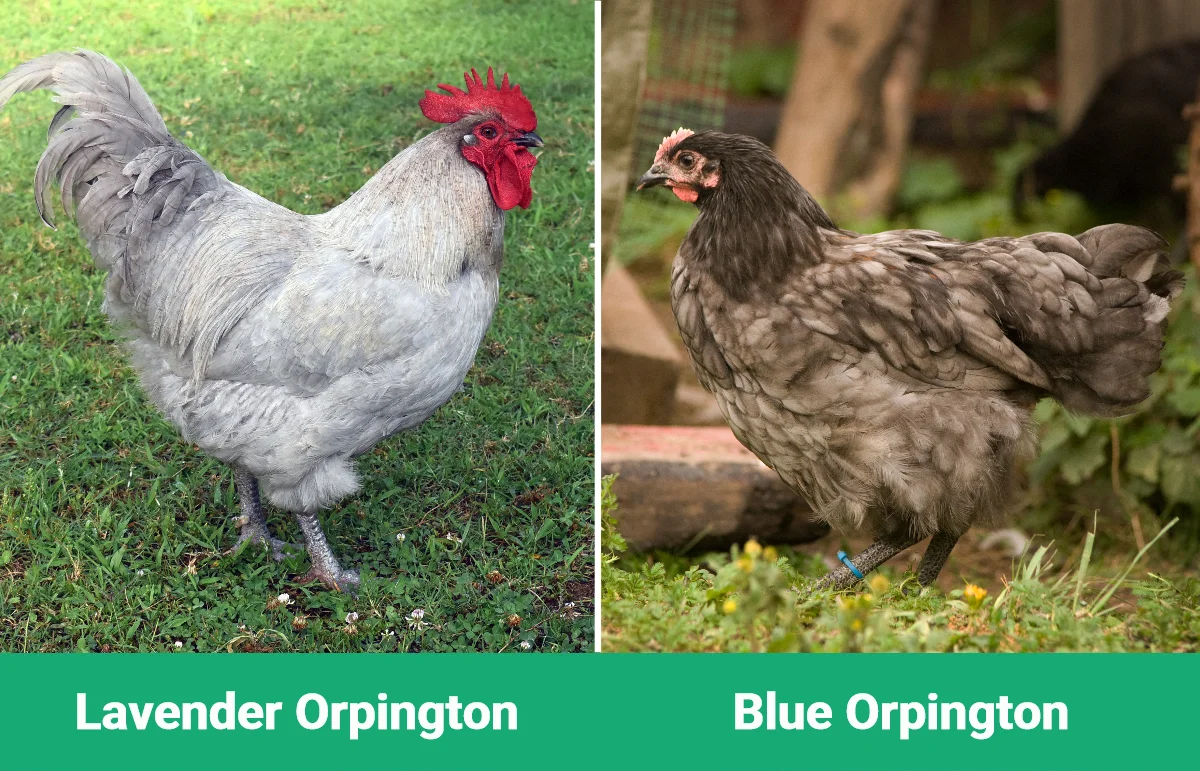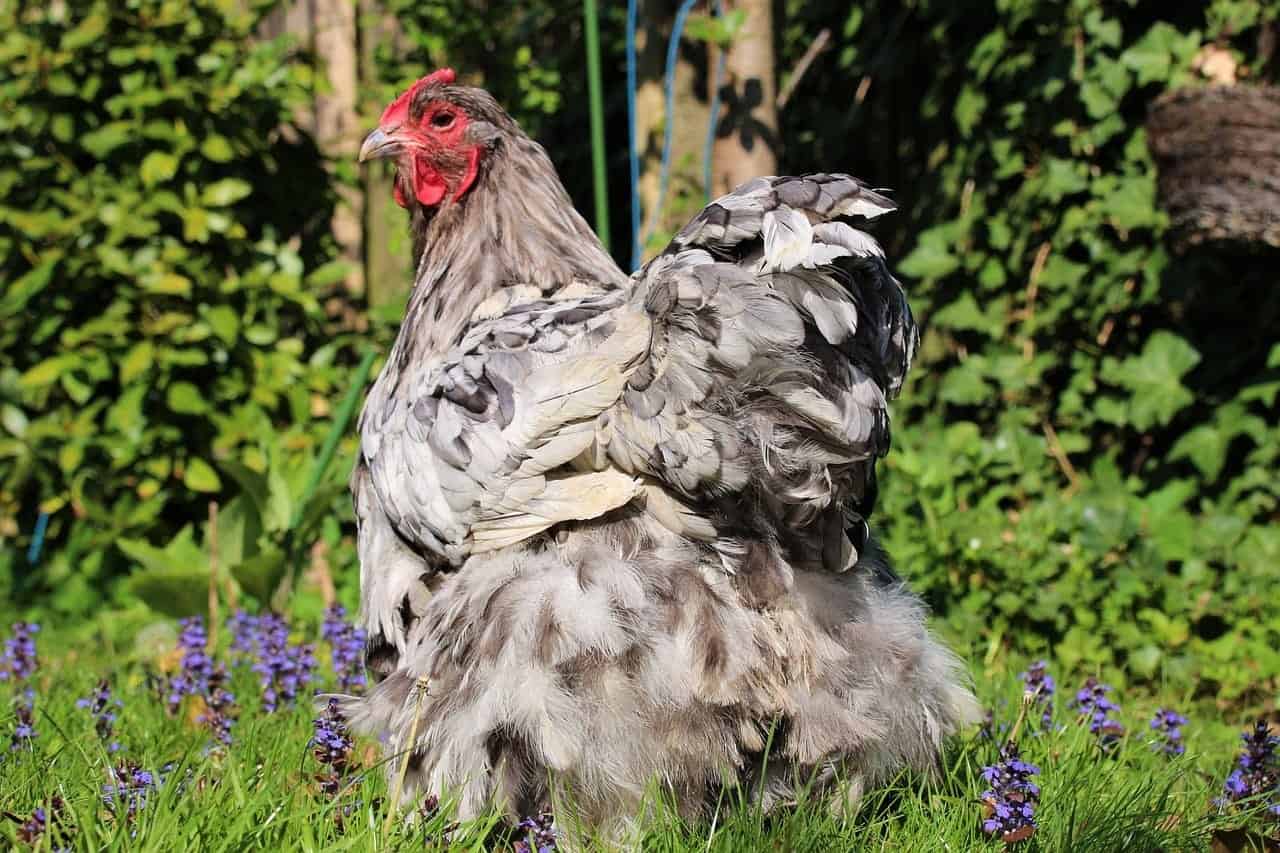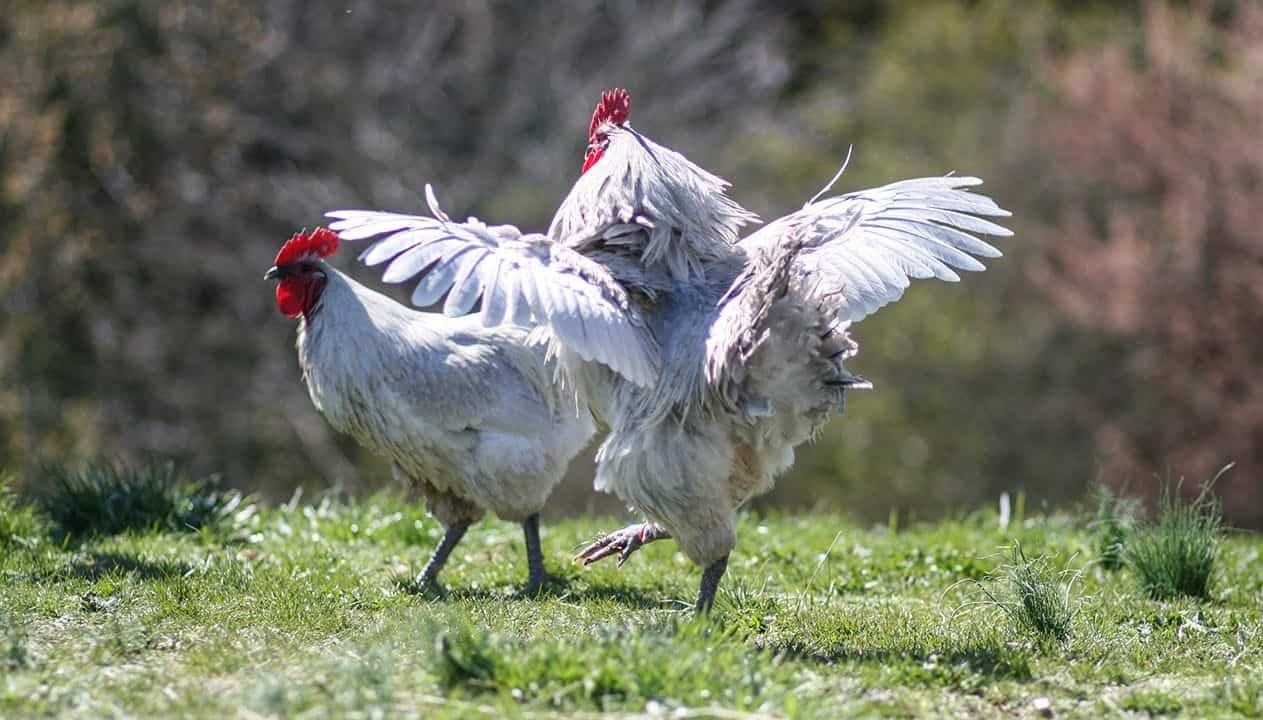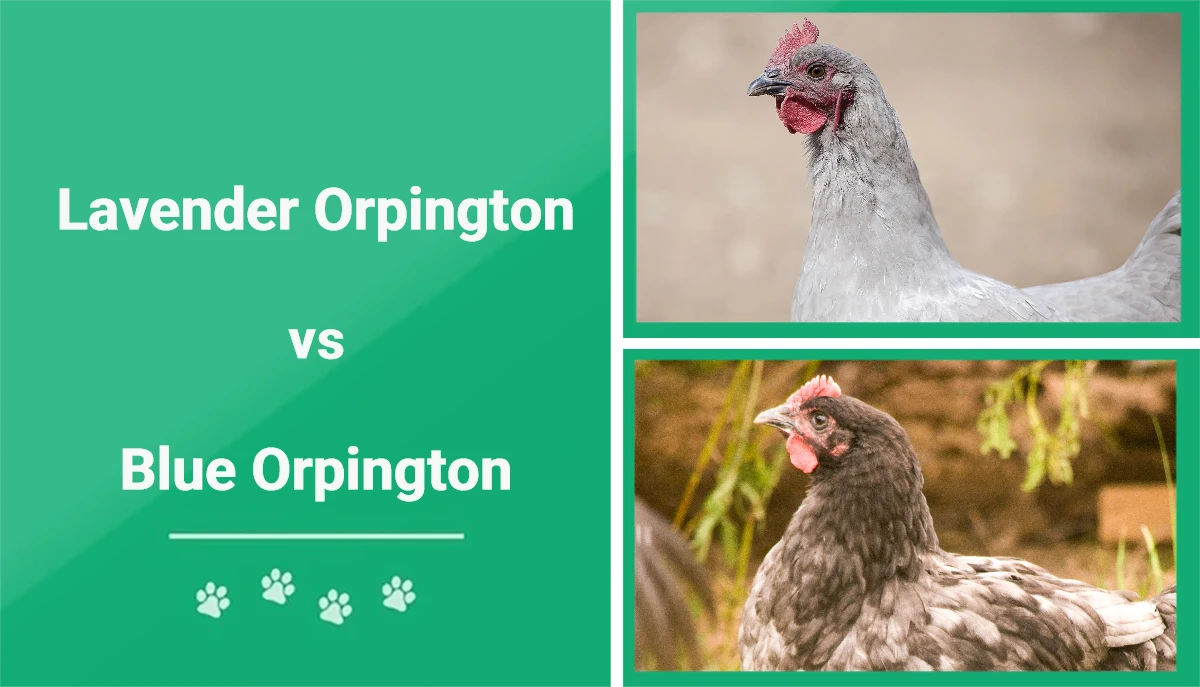Orpingtons are one of the most popular chicken breeds in the world, and deservedly so. They are not only prolific egg layers but also have a sweet nature that makes them the ideal bird pet.Additionally, Orpingtons come in various colors and patterns, allowing you to choose one that tickles your fancy. Lavender Orpingtons and Blue Orpingtons look incredibly similar and are a favorite for many people. But aside from color, are there any other differences between these two Orpington birds?
Long story short, no, they have no other differences. They share similar characteristics irrespective of color.
Read on to find out all about this unique bird.

Visual Differences


Orpington Chicken Breed Overview
This breed traces its roots to the English town of Orpington, where a coachman named William Cook decided to develop a dual-purpose breed, i.e., an egg layer and a meat producer.
In 1886, Cook revealed the Black Orpington breed, which was designed to conceal dirt and soot that was everywhere at the height of the Industrial Revolution in England. The Black Orpington went on to become one of the most popular chicken breeds in England.
However, Cook was not done yet, as he began mixing the original Orpington with other breeds, such as Hamburgs and Dorkings, to create the various colors we know today, including the Lavender and Blue Orpington.

- Average weight (adult): 7 – 9 pounds
- Lifespan: 5 – 7 years
- Family-friendly: Yes
- Other pet-friendly: Often
Appearance
Orpington chickens sport one of the most distinct looks of any chicken breed. For starters, they are short and have a low stance but are incredibly stocky. Their feathers are smooth and broad, forming a compact plumage.
However, Orpington chickens come in two sizes, regular and bantam, with the latter being smaller. Nonetheless, this breed can attain decent sizes, with roosters weighing up to 10 pounds and hens weighing up to 8 pounds.
In addition to Blue and Lavender Orpingtons, other color varieties include Buff, Black, and White Orpingtons.
Understanding Coloring
The color of an animal depends on its genotype — a term used to describe the genetic makeup of an organism. According to Mendel’s laws of inheritance, any genetic trait in an offspring results from combining their parents’ individual genes.
For example, the color blue comes from combining the black (BB) gene and splash (bb) gene. This means that if a black chicken (BB) breeds with a splash-colored (bb) chicken, all their offspring will come out blue (Bb). This explains how the Blue Orpington chicken comes about.
However, when blue (Bb) chickens breed with each other, their offspring are likely to be 25% black (BB), 25% splash (bb), and 50% blue (Bb).
There is also another type of blue, and it is known as the self-blue. This, in poultry, is one that breeds true. That means that if self-blue chickens breed, all their offspring will be a self-blue. In Orpington chickens, genetically self-blue individuals are known as Lavender Orpingtons.
Therefore, the main difference between Lavender Orpingtons and Blue Orpingtons is that the Lavenders will always breed true while blues do not; otherwise, everything else is the same.

Personality/Character
Orpingtons are some of the most wholesome chickens you will ever meet. Docile and friendly, they make incredible pets. What’s more, they even love being cuddled.
Nonetheless, when it comes to taking care of their eggs, Orpingtons are one of the broodiest birds out there. They will even go as far as hatching other chickens’ eggs. Their maternal instincts are just that strong.
Orpington roosters are remarkable protectors, too, sometimes guarding the nest when the brooding hen decides to take a break.
Nevertheless, they are incredibly sweet birds.
Egg and Meat Production
As mentioned, Orpington chickens are a dual-purpose breed, meaning that they are kept for both egg and meat production.
When it comes to egg production, an Orpington hen produces at least 200 eggs per year, with some laying as many as 280 eggs.
As for meat, they are one of the best table birds in the game. Additionally, they are usually table-ready at only 22 weeks old, allowing you to save on feeding and housing costs.
However, the rapid growth rate of this breed makes it especially susceptible to obesity.

Health & Care
Since they are a hardy breed, Orpington chickens are not susceptible to most conditions that affect other breeds. However, like other chickens, you will still need to have them inspected for common conditions such as bumblefoot, impacted crop, and spraddle leg.
However, as mentioned, they are susceptible to obesity due to being heavy feeders. Therefore, instead of providing them with unlimited access to feed, allow them to roam. This will ensure that they get enough exercise.
Breeding
As mentioned earlier, Lavender Orpingtons come from breeding Lavenders with each other. When it comes to Blue Orpingtons, however, only 50% of the chicks will come out as blue.

Which One is Right For You?
This might just come down to your color preferences, as Lavender and Blue Orpingtons are the same bird. As a breed, they are great chickens. They look good, are prolific egg layers, are great table birds, and make good pets due to their docile disposition. What more could you ask for?
- Related Read: Silver Laced Orpington Chicken
Featured Image Credit: Top – OryPhotography, Shutterstock | Bottom – Erozarka, Shutterstock
